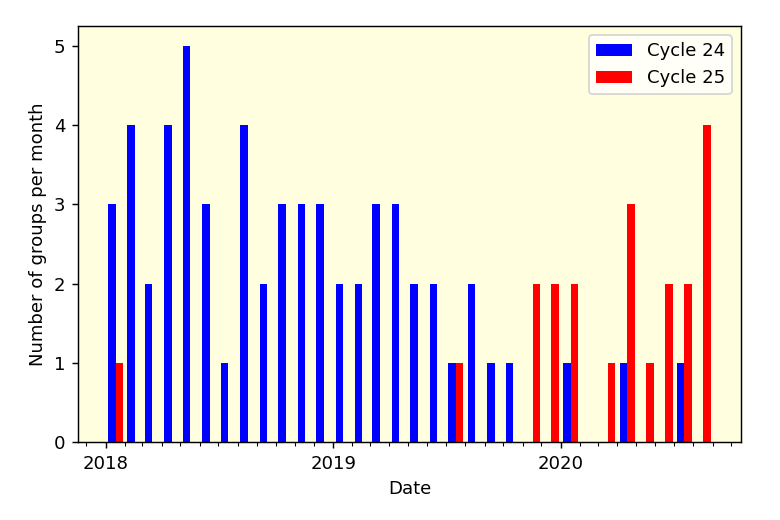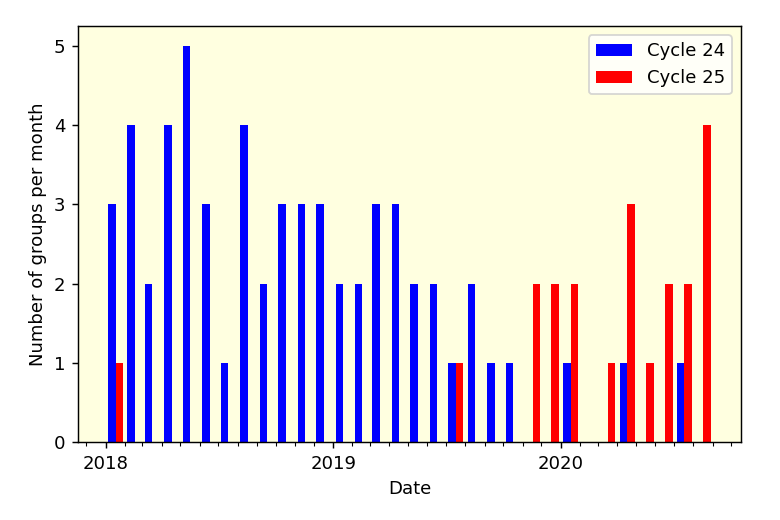December 2019 confirmed as starting point of the new solar activity cycle
The reference date and amplitudes of the minima and maxima of the 11-year solar cycle are established on the base of the sunspot number maintained and distributed by the SILSO World Data center since 1981 at the Royal Observatory of Belgium.
Over past years, the rather weak cycle that had peaked in 2014 has been progressively declining, heralding the approach of the minimum that marks the transition to the next cycle and is characterized by long fully quiet and spotless periods. Month-after-month, SILSO has carefully monitored the general trend in the activity. In January 2020, the 13-month smoothed sunspot number rose for the first time since the maximum of cycle 24 (April 2014). Now, by September, this reversal of the trend was firmly confirmed, officially placing the minimum between cycles 24 and 25 in December 2019. The Sun has thus now started its ascending phase towards the next maximum. This date also sets the duration of the past solar cycle at exactly 11 years, as the last minimum occurred in December 2008, thus almost exactly the average length of all past sunspot cycles, which ranges from 9 to 14 years.
This confirmed minimum will now be used to constrain scientific models and predictions of the future solar activity developed by solar researchers. December 2019 falls within the rather broad date interval (July 2019 to September 2020) announced by the International Solar Cycle 25 Prediction Panel, supported by NASA and NOAA, and to which SILSO is participating. Now that we have pinpointed the true minimum, the Panel will be able to refine the prediction of the next big milestone of the new cycle: its maximum, so far expected between 2023 and 2026. On this occasion, NASA just issued a dedicated press release on September 15.
Another indication of the transition between the two cycles can be drawn from counts of individual sunspot groups belonging to the old and new solar cycles. While most sunspot groups belonged to the last solar cycle until September 2019, the dominance switched to groups of the new cycle in November 2019.
So, this transition in terms of the number of active regions falls in October 2019. This matches rather closely the above date of the lowest sunspot number, and demonstrates in a different way that the new sunspot cycle has definitely taken the lead since the start of 2020.
This late-breaking upward trend is now expected to accelerate over the coming months.
So, be prepared for a more eruptive and interesting Sun!
More information:
- The SILSO website: http://sidc.be/silso/
- The NASA press release: https://www.nasa.gov/press-release/solar-cycle-25-is-here-nasa-noaa-scientists-explain-what-that-means/
- Video: “How to track the solar cycle”
- The news on the STCE website: http://www.stce.be/node/828


